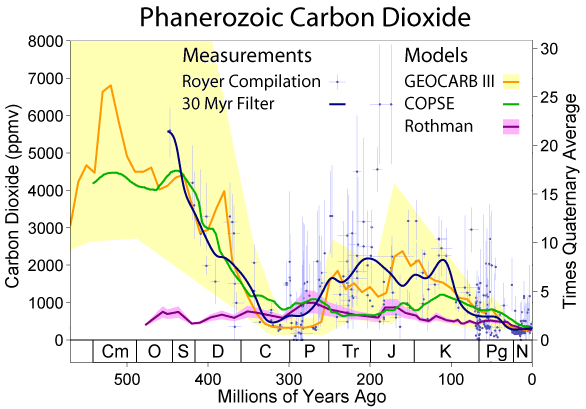I used to talk with a family friend who often sent me links to Nobel Prize winners, claiming that climate change is a myth.
Last week, we had a disagreement over a link referencing a Nobel Prize recipient (I believe it was Dr. John Clauser). This link displayed a graph of CO2 levels spanning the past 140 million years, indicating a linear decreasing trend. The article posited that we are depleting our CO2 reserves, a vital gas for plants and, by extension, the biosphere.
I responded by saying:
"Jorge, that graph is misleading. CO2 levels during the Phanerozoic era are influenced by the Wilson Cycle, and they correlate with the formation and fragmentation of Pangaea. We are not depleting CO2 as the subduction process is initiating in the Atlantic. In the forthcoming million years, CO2 stored by organisms will be released."
Source: Wikimedia Commons.
I heard this argument at the University of Zaragoza. However, I am uncertain if both my teacher and I have a comprehensive understanding of this matter. One of my concerns is that CO2 dissolves below the Calcite Compensation Depth. I'm unsure if all sediments dissolve or just the top layers. This uncertainty leaves me pondering whether my argument could be refuted on this basis. I couldn't find any clarifications on Science Direct either.
Could someone elucidate this matter for both my friend (who will read this) and me?
Are the Phanerozoic CO2 levels indeed linked with the Wilson Cycle? If so, why?
Bonus Question:
If humans don't intervenewouldn't exist, willwould we run out of CO2? (To me, this seems like an absurd query, especially in the context of that Nobel Prize article, because we'll likely gain control over Earth's geochemistry and climate long before then.) To rephrase: if we exclude human influence, would shell organisms eventually consume all the CO2 by the end of the Phanerozoic era, leading to a mass extinction and the emergence of a distinct form of life? Would this scenario transpire in this cycle or the next?
